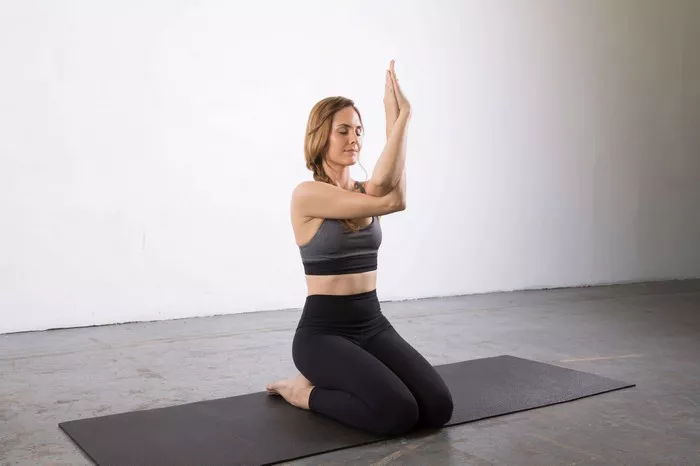Yoga, an ancient practice originating from India, encompasses a plethora of poses, each with its unique benefits and symbolism. Among these is the Table Pose, known as Bharmanasana in Sanskrit. While seemingly simple, this pose carries profound significance and offers numerous physical and mental benefits. In this article, we delve into the origins and symbolism of the Table Pose, explore its physical and mental advantages, discuss variations and modifications, provide step-by-step instructions, and highlight precautions and contraindications for practitioners.
Origins and Symbolism
The Table Pose finds its roots in Hatha Yoga, one of the oldest forms of yoga, which focuses on the physical aspects of practice, including postures (asanas) and breath control (pranayama). In Sanskrit, “Bharman” means “table,” reflecting the shape one’s body takes in this pose, resembling a sturdy table.
Symbolically, the Table Pose represents stability, balance, and alignment. Just as a table provides support for objects placed upon it, this pose offers a stable foundation for the practitioner, both physically and mentally. It signifies the importance of grounding oneself and finding balance amidst life’s challenges.
Physical and Mental Benefits
The Table Pose boasts a plethora of physical and mental benefits, making it a valuable addition to any yoga practice. Some of the key advantages include:
1. Improved Posture: Regular practice of the Table Pose helps in aligning the spine and strengthening the muscles of the back, shoulders, and core, leading to improved posture both on and off the mat.
2. Enhanced Stability and Balance: By engaging the core muscles and stabilizing the body, this pose enhances balance and proprioception, reducing the risk of falls and injuries.
3. Stress Relief: The gentle stretch experienced in the Table Pose can help release tension in the back, shoulders, and neck, promoting relaxation and stress relief.
4. Digestive Health: The gentle compression applied to the abdomen in this pose stimulates digestion and can help alleviate digestive issues such as bloating and constipation.
5. Mental Clarity: Practicing the Table Pose encourages mindful awareness of the body and breath, promoting mental clarity and focus.
Variations and Modifications
Like many yoga poses, the Table Pose offers various modifications and variations to accommodate practitioners of all levels and abilities. Some common variations include:
1. Extended Table Pose: In this variation, the practitioner extends one arm and the opposite leg simultaneously, increasing the challenge to balance and stability.
2. Thread the Needle: This variation involves threading one arm under the body, stretching the shoulders and upper back while engaging the core.
3. Cat-Cow Pose: Often incorporated into flow sequences, Cat-Cow Pose involves alternating between arching and rounding the spine while in the Table Pose position, offering a gentle spinal mobilization.
4. Supported Table Pose: Placing a cushion or yoga block under the wrists can reduce wrist discomfort and make the pose more accessible for those with wrist issues.
5. Dynamic Table Pose: Incorporating dynamic movements such as hip circles or shoulder rotations while in the Table Pose position can further enhance flexibility and mobility.
Step-by-Step Instructions
Practicing the Table Pose is relatively simple, making it suitable for beginners and experienced yogis alike. Follow these step-by-step instructions to perform the pose safely and effectively:
1. Start by coming onto your hands and knees on the yoga mat, aligning your wrists directly under your shoulders and your knees directly under your hips.
2. Spread your fingers wide and press firmly into the ground, distributing your weight evenly through your palms and fingers.
3. Engage your core muscles by drawing your navel in towards your spine, creating a stable and supported base.
4. Keep your spine neutral, neither arching nor rounding excessively, maintaining a straight line from your head to your tailbone.
5. Relax your shoulders away from your ears and lengthen through the crown of your head, keeping your gaze down towards the mat to avoid straining your neck.
6. Hold the pose for several breaths, focusing on maintaining steady and controlled breathing.
7. To release the pose, gently lower your knees to the mat and come back to a seated position, or transition into another yoga pose as desired.
Precautions and Contraindications
While the Table Pose is generally safe for most individuals, there are some precautions and contraindications to consider:
1. Wrist Issues: If you have wrist pain or injuries, place a folded towel or yoga mat under your wrists to provide additional support. Avoid putting excessive weight on your wrists and listen to your body’s signals.
2. Knee or Shoulder Injuries: If you have any knee or shoulder injuries, approach the pose with caution and consider using props or modifications to reduce strain on these areas.
3. Pregnancy: Pregnant individuals should avoid deep twists or compressions in the abdomen. Modify the pose by widening the knees slightly to create space for the belly or consult with a prenatal yoga instructor for guidance.
4. High Blood Pressure: Individuals with high blood pressure should avoid holding their breath or straining excessively in the pose. Focus on maintaining steady and controlled breathing throughout.
5. Neck Issues: If you have neck injuries or discomfort, keep your gaze down towards the mat rather than looking up, and avoid any movements that exacerbate neck pain.
As with any yoga practice, it’s essential to listen to your body and honor its limitations. If you experience any pain or discomfort during the Table Pose, gently release the pose and consult with a qualified yoga instructor or healthcare professional for guidance.
Conclusion
In conclusion, the Table Pose is a foundational yoga posture that offers a myriad of physical, mental, and symbolic benefits. Whether you’re looking to improve your posture, relieve stress, or cultivate balance and stability, incorporating this pose into your regular practice can be immensely rewarding. With proper alignment, mindfulness, and modifications as needed, practitioners of all levels can enjoy the transformative effects of the Table Pose on and off the yoga mat.






















